
Lizzie Grayshon and Jodie Case of the Waders for Real team visited Lough Erne Wildfowlers Council (LEWC) in County Fermanagh, Northern Ireland, to learn about the work being carried out to recover declining wader populations. Severe declines of Curlew, Snipe, Redshank and Lapwing have been experienced in this area since the 1980’s with factors such as changes in land use and increased predation affecting productivity. For this reason, the LEWC stakeholders are active in the sustainable management and conservation of Lough Erne to improve the status of breeding waders.
We arrived Monday lunchtime where we met Michael Stinson, the project manager and Tom McGoldrick, Chair of the Lough Erne Wildfowlers Council (LEWC). We took a short trip to Upper Lough Erne where they have recently begun work for breeding waders - Snipe, Curlew, Redshank and Lapwing. Lough Erne is the second largest lake system in Northern Ireland with reputedly 365 islands, comprised of two connected lakes referred to as the Upper Lough in the southern part due to it being higher up the river, and the larger northern lake known as the Lower Lough. After initial scrub management work in early 2019, 2 pairs of Curlew bred on the main island (up from one pair in 2018) and even more encouragingly, 4 pairs of Lapwing returned to the site, having been absent for many years.
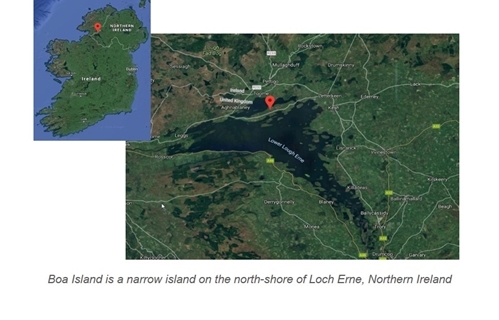
We went out on a small boat to view some of the islands and visit areas where we could provide habitat improvement advice to further increase wader breeding numbers and increase productivity. Sharing knowledge on what works for breeding wader recovery is essential for the recovery of declining waders. From the boat we spotted some large lapwing chicks that were close to fledging; a great and promising success for their first year back in this area – the group and farmers were very excited by this success!
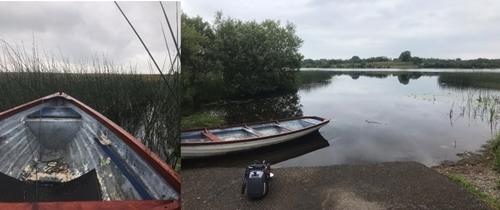

On the Upper lough, the work is led by Derrylin and District Gun Club (a founder member of LEWC) and the club has done some really great work on these islands already, clearing areas of scrub that have grown up and liaising with farmers to promote better management of the grazing for waders. This is showing with the increase in breeding Curlew and return of Lapwing. Curlew are an extremely threatened species in Northern Ireland (a local decline of more than 90% in breeding pairs since the 1980s) and across the rest of the UK, so being able to retain breeding pairs is extremely encouraging.
On the second day of the visit, we were taken to Boa Island at the northern part of the Lower Lough which is a larger expanse of water. In this area LEWC have been running the Boa Island Breeding Wader Project since 2014. The project has increased displaying Snipe numbers by 480% (5-29 birds) between 2014-18, with Redshank, Curlew and Lapwing also now breeding in areas they had previously deserted. Until 2018 the project was solely funded by reinvestment of wildfowling permit revenue with occasional grants from NIEA and Wildlife Habitat Charitable Trust. However, in late 2018, the project received a very significant financial boost from a National Lottery Heritage Fund grant, which will allow the project to expand in the next 4 years.
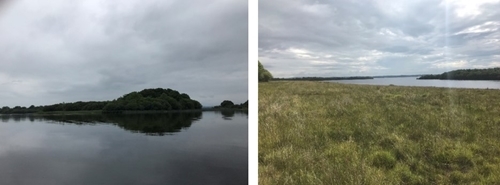

While on Boa Island, we were shown many of the farmed areas and met with a local farmer to take a closer look at some of his fields to discuss further possible management options. He was keen to do more with the project (having been involved since 2014) and suggested new scrub removal on one of his fields, near to the water’s edge. He was delighted to report that he had seen Snipe chicks on his lawn (which adjoins a breeding wader field) the previous week!

Predator control is carried out across the Lough, with many of the farmers and wildflowers carrying out corvid and fox control. Michael, the project manager also uses some of the project budget to carry out control, purchasing Larsen Traps and carrying out corvid control himself. The lack of corvids around Boa Island was very noticeable. Michael explained that the numbers of corvids trapped and controlled have reduced, showing that their control efforts are having an effect in the vicinity of the main sites on Boa Island. Fox control is a constant battle, with foxes swimming between islands, making it difficult to reduce the population, however, control of foxes is a continued effort.
Our final activity during our visit was a meeting with some of the members of LEWC at a local community centre. Michael provided an introduction to the wildfowlers of why we had come to visit the Lough and their project, then Lizzie gave a presentation on the Waders for Real project, showing the various habitat management implemented and other possible actions the LEWC project could adopt to help their progress, such as placing temperature loggers in nests to better understand hatching success. There was a lot of questions and interest in the Waders for Real project after Lizzie’s talk.
This project is inspirational - started, driven and part-funded by stakeholders and waterfowlers, with limited AES support, it is a great example of what can be achieved with commitment and advice. Our aim was to help enthuse more farmers in the area, to support the wildfowlers and project coordinators. We hope we did and wish all involved the best of luck with continued commitment to increasing wader numbers and offered our support in the future should they require it.
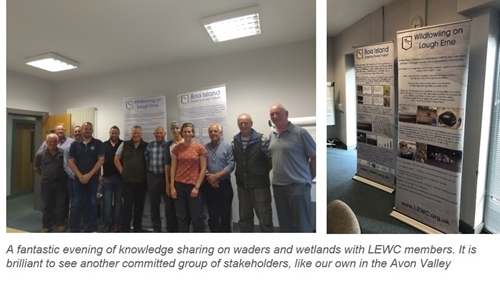
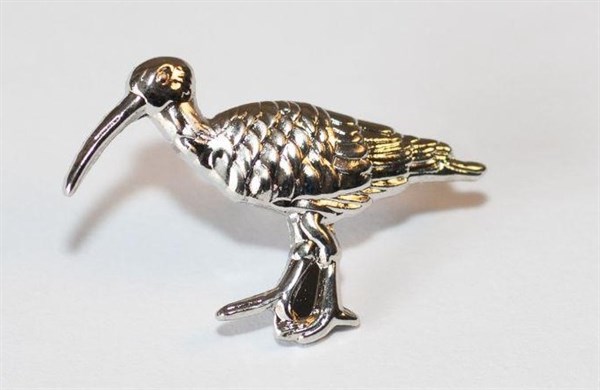
Get your Curlew Supporters Badge for £9.99
You can help us get practical curlew conservation advice to those on the ground by buying one of our curlew pin badges. £5 from the sale of each badge goes to our Action For Curlew project, which is helping to provide advice to farmers, landowners and gamekeepers on the action they can take to reverse the alarming decline in curlew numbers. Badge measures approx 3cm.
View Badge >
or
Buy Now - £9.99 >
100% Secure. All Credit & Debit cards, PayPal, Apple Pay and Google Pay accepted.
